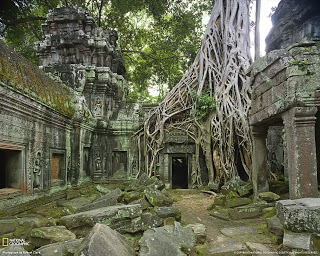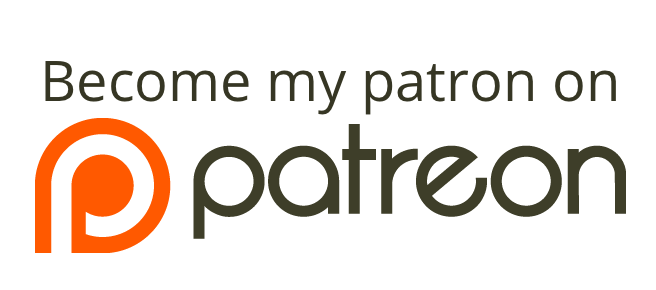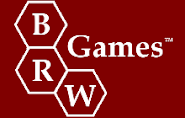As many of you know, I’ll be publishing the Castle of the Mad Archmage megadungeon, which was originally released here as a free pdf in serial format, as a print product.
The idea is to have two books; one for the dungeon key, and another for the maps. I’ve run the thing enough myself in my home campaigns at at conventions to know that having it all in one book is a royal pain in the ass.
Having poster maps is simply not practical, since you need to have them behind the screen. It’s one thing if the players can see that Medegia is southeast of Nyrond because the map of the Flanaess is on the wall of the gaming room; it’s another if they can see that there’s a secret corridor leading to a series of caverns that they otherwise wouldn’t suspect existed.
My question is, what other features do you think would make a published megadungeon really sparkle?
I’ve already added a lot of new material that wasn’t in the free version, and I want to add more. There’s stuff on appropriate missions designed to bring the PCs into the dungeon on specific quests, there’s tips on how and where to run the dungeon at conventions (not always starting with the surface ruins), each level will have guidelines on restocking and how the various power bases will shift based on likely PC actions, a bazillion rumors to plant, more general advice on how to run a megadungeon (including, for instance, how to handle things when the PCs decide they want to camp in the dungeon overnight), and there’s a whole section of rival NPC adventuring parties to use as rivals to the PCs.
My question is, what else would you like to see in a vast, sprawling, megadungeon? What would be useful? What would be a must-have? What would be superfluous? Feel free to think outside the box; battle mats? A book of illustrations? A soundtrack? Set pieces available in miniature terrain? A zillion things I’ve not thought of? I want your input.
Now’s the time. What would make this really stand out? This one was always something near and dear to my heart, and I want to make sure it meets as many expectations as I can. Let’s make it awesome.










Maps are my biggest complaint about most mega dungeons. I'm very glad to hear you'll have a separate book for the maps.
Considered at least one copy ordered.
Pictures to set the scene – the main entrance, the main stairs, any significant bas relief faces, etc.
And I'd rather have the map book than hard-to-use poster maps, if that makes it any better.
Illustrations – pictures I can show the players of major set pieces. Bas relief faces, stairs, main doors, etc.
Illustrations and other player handouts are tops with my team, Joe.
Outside the box.
I'd like to see a computer disc with the maps on it. Including one designed as "clip art" to keep players updated. That is one which doesn't include secret passages and can be easily edited for a "our story so far" hand outs.
I know some people don't like computers at the table, but I do. I like putting floor plans up on someone's big screen (and still dream of mounting a monitor beneath one inch grid glass for instant floor plans). I like emailing a between session map out to the players to remind them what is going on and get them excited to show up. For that matter,I've found a nice slide show worth doing as well.
From what I've seen of online games, I think having access to such a thing would be quite valuable. You already have digital files for the printer, why not include them in the product? For that matter, a clip-able text file of room descriptions would be handy as well for such games. One reason I never AOL gamed is that I could see to do it well, you'd need to be far more prepared than I ever am.
It doesn't have to have a fancy interface, a well organized data disc would be enough. It doesn't have to be everything, so you don't have to worry about copies being made. Consider that this would allow you to add player handouts, without increasing your printing costs beyond the initial disc cost. Any printing done would be on the user's dime.
I recently ran a mid-size dungeon with a group of people, some new to the game, most we had never played togheter and some old buddies. I had prepared a version of the full map on little bits of papper, one room per piece, without any secrets but with lots of details. Every room was coded so that you could join them togheter to recreate the full map.
When they would enter a room, I'd give them the appropriate part of the map, so one of them could draw it on the battle mat (I use a really large one, when I do use one) while I did describe the room and what every element of the drawing was (like columns, statues, textures, stairs, furniture) and some extras, like sounds or smell.
Turned out it did work quite well, everybody liked it and I kept the original map for myself.
So it would be really nice to have this "stripped" version of the map with some cuttings lines printed. It wouldn't work if there is some misdirection effect, but for everything else, it's a breeze
An illustrtion book is fantastic. It helps all involved see what you, the author, envision a room, decoration, or device to actually look like. Which leads to, unique and interesting room descriptions are a must have. We don not want empty room after empty room or room with two kobolds on guard.
After all, if we wanted to design the thing, we wouldn't need to buy your book.
Hardcover book, at least the key book.
I much prefer having all of the cpontent in a single book and also a stapled book of maps for east photocopy or pdf access to maps for game use.
A book of illustrations. Barrowmaze hit the nail on the head.
Have some tables unique to your mega dungeon, other than wandering monsters. Maybe places where the mad archmage's magic has gone berserk and you have to roll to see what effects it might have on the PCs.
Pay for good art.
You idea of a map booklet is great.
Good luck!
The books of illustrations that came with the Barrowmazes are quite awesome…
Oh, and a PDF version as addon to the printed product is always cool, with maps with enough resolution for online games…
A book of illustrations always makes sense if you are introducing new monsters or have elaborate/difficult traps/rooms to convey to players.
Maybe half-completed maps, made before some poor adventurer got lost and wandered deeper, are good to show there are other entrances/exits, levels, safe spots, and dangers elsewhere.
What would make it stand out? Getting it out on time.
Too soon? 😉
Seriously, I think that just having the whole thing would be good. I'm loving Anomalous Subsurface Environment, but it is coming out glacially slowly, and I am not really happy with it being in several books. That said, it certainly would be nice if the maps were separate from the key.
I'd like to see some setting info: details of the 30-mile hex that you place it in, for instance, and the city, call it Slatefalcon, that it is near (plus its location relative to that city). Sure, we can move it into our own settings, but what if we don't want to?
Actually, the idea of a book of illustrations, presumably similar to that found in say Tomb of Horrors, would be great. I have actually been working on a sketch of the Great Stone Face Enigma (mostly just copying an Easter Island statue and adding a few details) based on the crude drawing in the original Greyhawk supplement.
It probably doesn't fit with your vision, but I find the most *useful* format for a megadungeon to include a small inset map of the rooms being discussed on each page, together with brief essential stats for any monster described.
That said here are some other features that would be useful:
1. On the map, icons showing sources of noise and light, as well as monsters that might be attracted by the party's noise and light.
2. Room restock encounters, and a list of features to make an empty room more interesting.
3. Illustration booklet!
An index. Indexes are invaluable.
In my longest running D&D campaign, I centered the whole thing around Waterdeep + Undermountain. While the party left the city from time to time, most of the adventuring took place in those two places. I used a zip up 3 ring binder to hold folders which held all the gaming material. I also put the main books for the dungeon in this binder and a thin spiral bound notebook. This notebook allowed me to keep track of ideas, player changes to the dungeon, etc…
The reason that I bring this all up, is I had a folder for Waterdeep maps, a folder for the sewers, a folder for undermountain maps, a folder with just pages full of extra rooms that I had added descriptions to, and an entire folder each for traps and extra monsters I created!!! Each folder was a different color which helped me move quickly. With this one zip up 12-15 pound monstrosity, I could run all my games out of it. At that time as a 16-17 year old I was gaming about 24-30 hours a week easy, and most of it took place in this dungeon.
Think about the GM expanding on your creation, how is he/she going to organize this thing to maximize playability. Color coding, and labeled tabs help immensely. Make it easy to add more.
1. Themed Dungeon Master Screen with wicked cool art and Dungeon specific tables and charts.
2. Themed Character sheets with tables to track ammo and supplies.
3. Themed dice set?
All I got for now.
ERIC!
I would love to see side bars or an "authors notes" section that explains some of the choices you made, and why. If there are things that are not immediately obvious on the first (or second) read through, having a dedicated section to explain them or at least comment on them would be a huge help.
Like, let's say you placed a group of unusual monsters or foes in there, just because you thought they were neat. It would be helpful for the GM to know that they are there because you thought that, and if they want to explore the "how" or "why" of them, they're free to come up with their own explanation.
When I'm dealing with a "mega" module of any sort, I'm often leery of adding or subtracting in case I missed or forgot something. I might say they are the one thing, only to find out a month later that there's an artifact that explains what's going on, but I missed its significance in my read through, and now I need to do a bit of backpedaling.
Have you read some of the mega dungeon reviews at tenfootpole.org? Here's a link his favorite OSR products, but if you read the mega dungeon reviews you get a feel for suggestions you might consider.
http://tenfootpole.org/ironspike/?page_id=844
Well it certainly seems that an illustration book is getting the most interest here in the comments! That would make a third book for the set. We'll see how that works printing-wise.
Bear in mind that like all my print books, the pdf will come with it for free. You'll also have the option of buying the pdf version as a stand-alone.
Lots of other good suggestions to consider. Thanks all, and feel free to keep 'em coming.
I'm into separate booklets for the key and the maps.
These may come off as obvious, or already in the works, but they are things that consistently cause me problems running big dungeons:
1. Detailed, easy to find, to the point description of stock dungeon features — doors, passages, rooms, ceilings, etc.
2. Detailed description of connections between, every staircase and teleporter with a keyed entry stating exactly where it goes, over what distance, steepness, etc. It must be fool proof or I will mess it up.
3. Bullet list of room contents for each room. I've never seen this before, but I feel you can help the DM set the scene without bogging the key down with wordy prose. I liked CotMA's brevity but I'd like to see a little more detail.
Just my thoughts. Free CotMA ruled, I'm sure this will too.
Illo books are great but very expensive lol
Having just ended a 3 year campaign in your fabulous megadungeon, I have a couple ideas. 🙂
— Me too on the illustration booklet. Lots of great, visually exciting things in there that would benefit from illustrations.
— The idea about the factions reacting is also great. Looking forward to that!
— I had this idea for "stickers" that you could place over the old room description, maybe for "empty" rooms, that shows how they change on re-stock.
— Maps without secret doors, etc. that can be used on an LCD projector or on a virtual tabletop would be great.
— Connection maps — diagrams that show how some monsters react to others in the dungeon
Looking forward to the new book. I will definitely buy a copy!
Player handouts, including player centric maps of key rooms are a huge win IMO. I also like the idea of a custom DM screen, even if it's only a link to a PDF that lays the important tables out in both landscape and portrait layouts for easy clipping to a DM screen.
I don't know if it's relevant to your dungeon, but if there are competing factions within the mega-dungeon, I'd like to see a section compiling and listing all the factions and their troops/underlings, so that I can assess competing factions at a glance.
I created one for my current Temple of Elemental Evil campaign, placing all of the different temples and their troops (and where to find them) on an A3 sheet and have found it invaluable.
I would also like to continue the support for an illustration book.
Meh…get it out there…some of the above comments are good..but fer me…just getting it in me hands would be good enough
I would really like to see "treasure maps" of particular parts of the dungeon, which would be teasers/clues for the players, to give them motivation to explore.
As I continue (into my 4th decade of) gaming I realise that the only true megadungeons I explored were computer games like Wizardry back in the 80s. Recent games have been run with less detail about rooms and monsters that players may not even encounter. There are whole grey areas in fact. Three or four dungeon levels is enough for an area. With some inspiration as to what you may encounter. I like fantastic illustrations and clever random tables. Plenty of stuff to bounce ideas off on the fly, with maps that look like something an explorer might draw.